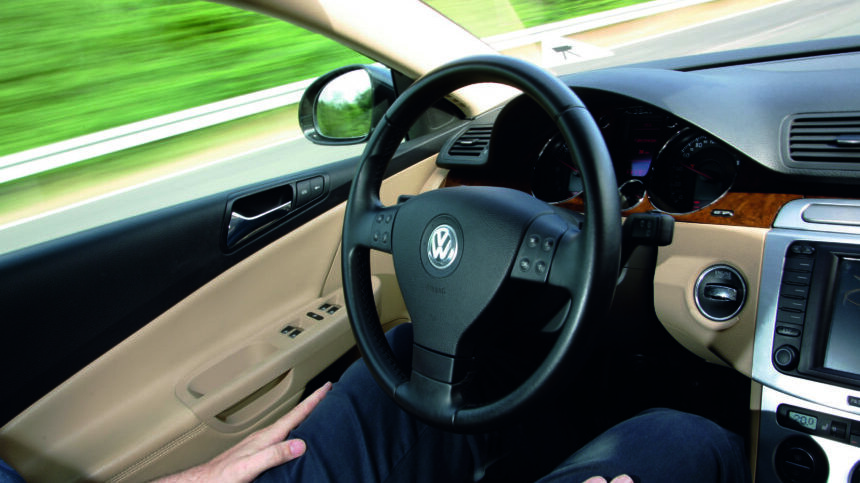Google cars not at fault

Automotive News Europe reports that Google’s self-driving cars have been involved in 11 accidents but have not been the cause of any over the last six years.
A team of drivers which is testing the fleet of more than 20 vehicles have driven 2.7 million km (1.7 million miles) so far.
‘Not once was the self-driving car the cause of the accident,’ Chris Urmson said in a post on technology news website Backchannel’s blog Medium. No one was injured in the accidents, he said. ‘If you spend enough time on the road, accidents will happen whether you’re in a car or a self-driving car,’ Chris said.
The cars had been hit from behind seven times, mainly at traffic lights, with a majority of the accidents happening on city streets rather than on freeways.
‘We’ll continue to drive thousands of miles so we can all better understand the all-too common incidents that cause many of us to dislike day-to-day driving and we’ll continue to work hard on developing a self-driving car that can shoulder this burden for us,’ Chris said.
‘Even when our software and sensors can detect a sticky situation and take action earlier and faster than an alert human driver, sometimes we won’t be able to overcome the realities of speed and distance,’ he wrote.
His comments came after a report said four experimental self-driving cars have had crashes on California roads since September when the state first required companies such as Google to hold permits for testing on public roads, according to a report.
Three of the four crashes involved the Lexus RX450h crossovers that Google uses to test autonomous driving technology. One involved an Audi crossover owned by supplier Delphi Automotive.
Both companies told Automotive News that their self-driving cars, which use sensors, maps and software algorithms to pilot themselves on public roads, were not at fault. The crashes were first disclosed Monday by the Associated Press.
Google has spurred intense public interest in self-driving cars since it started testing them six years ago on the streets and highways around its Silicon Valley headquarters. Its fleet of cars, which have a trained driver at the wheel in case something goes awry, now travel 16,000 km per week in self-driving mode.
Google’s response to the AP report illustrates a major challenge facing the Silicon Valley technology giant as it races suppliers such as Delphi and Bosch and automakers such as Audi, Mercedes-Benz and Nissan to develop self-driving cars.
Self-driving cars are seen as potentially safer than human drivers, as they do not drive drunk, fall asleep or fiddle with smartphones as human drivers do. Yet it may not be enough to be safer than humans. Computer-controlled cars may need to be nearly perfect for the public to accept them.
Google said continuing to test its cars on public roads is crucial to its mission. ‘All the crazy experiences we’ve had on the road have been really valuable for our project,’ Chris wrote. ‘We have a detailed review process and try to learn something from each incident, even if it hasn’t been our fault.’
The exact circumstances of Google’s crashes remain unclear. Two of the four crashes reported to the California Department of Motor Vehicles since September took place with cars in self-driving mode, according to the AP report. The other two occurred while the cars were under human control.
Delphi, which is working on self-driving cars to license the technology to automakers, confirmed that one of its test cars was involved in an accident last fall. Kristen Kinley, a Delphi spokeswoman, said no one was injured in the crash.
‘While operating in manual mode and stopped at an intersection, our car was struck by another vehicle that travelled across the median,’ she wrote in an email. ‘A police report indicates the fault of the accident is with the second vehicle. Not Delphi.’
A copy of the police report provided to Automotive News shows that the accident occurred on Oct 14 in Palo Alto, California, near Delphi’s Silicon Valley r&d center and Google’s headquarters.
The report says Delphi’s test vehicle, a black Audi SQ5, was stopped in a left-turn lane when it was broadsided by a silver Honda Civic that crossed the concrete median. The police officer who filed the report concluded that the Civic’s driver was at fault.
Delphi’s testing has moved forward since then. In late March, ahead of the New York auto show, Delphi took a self-driving SQ5 on a cross-country road trip from Mountain View to Manhattan. The car completed the journey without any major problems.
‘We observed that our vehicle is a bit skittish around semi trucks,’ Kristin said. ‘We also were passed by lots of unhappy drivers,’ she added, ‘because our car always obeys the speed limit and is extra cautious.’






